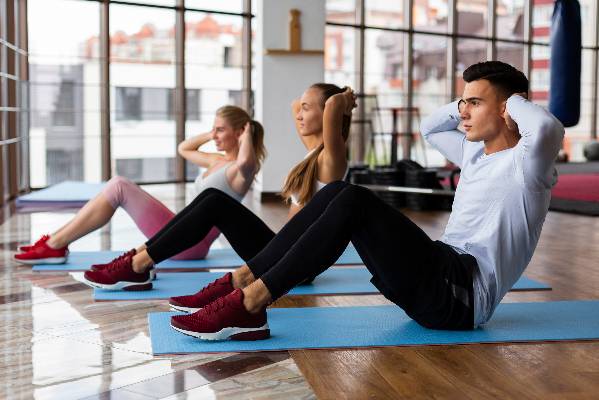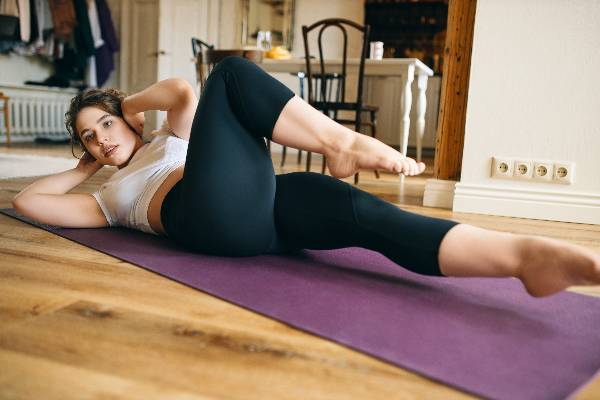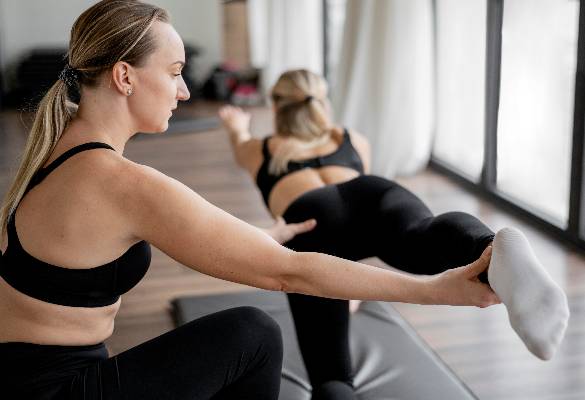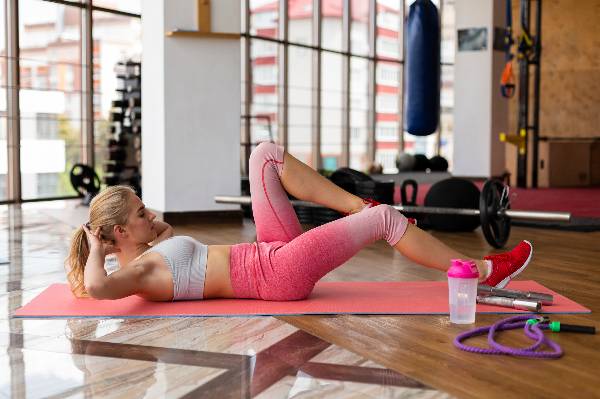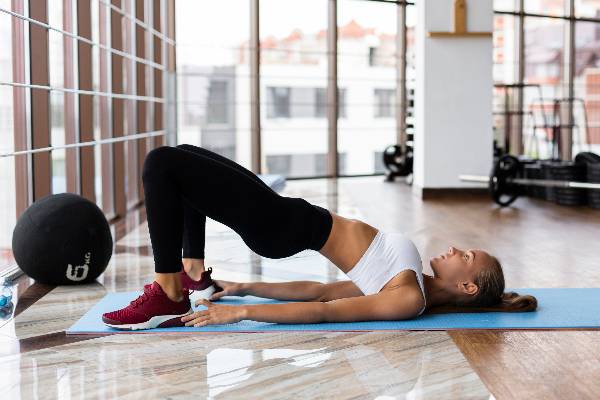Abdominal Exercises For Beginners
Are you ready to sculpt your midsection and build a strong foundation for overall fitness? If you’re just starting out on your fitness journey, focusing on abdominal exercises is crucial. Your core muscles not only play a key role in achieving that coveted six-pack but also support your daily movements and improve posture.
Whether you’re looking to enhance athletic performance or simply want to feel more confident in your clothes, dedicating time to work on those abs can make all the difference. But before diving into the workout routine, it’s essential to understand some foundational aspects of exercising this critical area effectively.
Let’s explore why targeting your abdominal muscles matters and how beginners can avoid common pitfalls while kickstarting their journey toward a stronger core!
Why is it important to exercise your abdominal muscles?
Exercising your abdominal muscles goes beyond aesthetics. A strong core stabilizes your entire body, enhancing balance and coordination.
When you engage in daily activities—like lifting objects or even sitting at a desk—a robust core provides the support needed to execute these movements safely. This reduces the risk of injury while promoting better posture.
Moreover, a well-conditioned abdomen plays a significant role in athletic performance. Whether you’re running, cycling, or playing sports, powerful abs contribute to greater strength and endurance.
In addition to physical benefits, working on your abs can positively impact mental health. Achieving fitness milestones boosts confidence and motivation, creating a positive feedback loop for continued progress.
Remember that core workouts aren’t just about crunches; they encompass various exercises that target different muscle groups within the abdomen for comprehensive development.
Common mistakes beginners make when exercising their abs
Many beginners dive into abdominal exercises without proper knowledge, leading to ineffective workouts. One common mistake is rushing through the movements. Speed can compromise form and reduce muscle engagement.
Another frequent error involves using too much momentum. Swinging or jerking your body diminishes the benefits of each crunch or plank. Focus on controlled movements instead.
Neglecting breathing techniques also hampers performance. Holding your breath creates tension, making it harder to maintain core stability during exercises.
Additionally, many newcomers overlook the importance of variety in their routines. Sticking to one or two exercises limits overall development and can lead to boredom.
Failing to engage the entire core is a major pitfall. It’s essential to remember that core strength includes more than just the abs; it encompasses obliques and lower back muscles as well.
The top 5 abdominal exercises for beginners
When starting your journey to a stronger core, focusing on effective exercises is key. Here are five great abdominal exercises for beginners.
The classic crunch works wonders. Simply lie on your back with knees bent and feet flat on the floor. Lift your shoulders off the ground while engaging those abs.
Next up, we have planks. Get into a push-up position but rest on your forearms instead of hands. Hold this position, keeping your body in a straight line from head to heels.
Bicycle crunches add some dynamic movement. Lying on your back, bring opposite elbow to knee as you alternate sides—just like pedaling a bike!
Leg raises are fantastic too; they target the lower abs effectively. Lie flat and lift legs toward the ceiling without letting them touch the ground as you lower them.
Try mountain climbers for an extra challenge that boosts heart rate while working those ab muscles simultaneously!
How to properly perform each exercise with proper form and technique
To properly perform crunches, lie on your back with knees bent. Place your hands behind your head but avoid pulling on your neck. Engage your core as you lift your shoulders off the ground.
For planks, start in a push-up position but rest on your forearms. Keep a straight line from head to heels. Hold this position while tightening your abdominal muscles.
When doing leg raises, lie flat and place your hands at your sides or under your hips for support. Keep legs straight as you raise them towards the ceiling without letting them touch the floor between reps.
Bicycle crunches require you to lie back again and bring opposite elbow to knee by pedaling legs in the air. Maintain control throughout each movement to maximize effectiveness and prevent injury.
Remember that proper breathing is essential during all exercises; exhale as you exert effort and inhale during relaxation phases.
Tips for incorporating ab exercises into your workout routine
Integrating ab exercises into your workout routine can be seamless with a few strategies. Start by scheduling them on dedicated days. For example, pair core workouts with your leg day or upper body sessions.
Another effective method is to incorporate abs as a warm-up or cooldown. Doing planks and crunches before strength training can activate your muscles and enhance performance.
Consider using mini circuits that include at least two to three abdominal moves interspersed between other exercises. This keeps your heart rate up while effectively targeting the core.
Listening to your body is crucial too. If you feel fatigued, allow yourself rest days focused on recovery for optimal results.
Mix it up! Varying your routines not only prevents boredom but also challenges different muscle groups within the abdomen, promoting balanced strength development.
How often should you do ab exercises?
The frequency of abdominal exercises can vary based on your fitness level and goals. For beginners, aiming for two to three sessions per week is a great starting point.
This allows your muscles to recover while still providing enough stimulus for growth and strength. Each session doesn’t need to be lengthy; 15 to 20 minutes can suffice.
Listen to your body as you progress. If you’re feeling fatigued or sore, it might be wise to allow an extra day of rest before diving back into ab workouts.
Mixing in core exercises with other muscle groups throughout the week helps maintain balance in your training routine. Remember, variety keeps things interesting and challenges different areas of your core.
Consistency is key for results while ensuring proper recovery will enhance performance over time.
Additional tips for a strong and toned core
To develop a strong and toned core, focus on variety. Incorporate different exercises that target all areas of your abdominal muscles. Planks, twists, and leg raises can enhance overall strength.
Don’t forget about nutrition. A balanced diet rich in whole foods supports muscle recovery and fat loss. This will help reveal the hard work you put into your ab workouts.
Hydration is key as well. Drinking enough water aids performance during exercise and promotes better recovery post-workout.
Engage your core throughout daily activities too. Whether sitting at a desk or standing in line, maintaining tension helps strengthen those muscles continuously.
Listen to your body. If something feels off or overly strenuous, take a step back to avoid injury and ensure sustainable progress over time.
Conclusion
Abdominal exercises are essential for anyone looking to improve their overall fitness. They not only enhance core strength but also contribute to better posture and stability. As you embark on your journey, remember that starting with the basics is key. Avoid common pitfalls by focusing on proper form and technique throughout each exercise.
Incorporating these movements into your routine can be done seamlessly, whether you’re at home or in the gym. Aim for consistency rather than intensity when beginning your ab workout regimen. Remember, it’s about building a foundation that will support more advanced training down the line.
A strong core enhances everything from athletic performance to daily activities. By dedicating time to strengthen this area of your body, you’ll likely notice improvements in other workouts as well.
Stay committed and enjoy the process of developing stronger abdominal muscles along with improved confidence in your physical abilities!
- About the Author
- Latest Posts
Johnnie D. Jackow Sr., the founder and CEO of Total Body Fitness, Worldwide, has a long-standing career in the fitness industry. He began as a certified personal trainer in the mid-90s and soon after authored his first weight loss book in 1998. This led to the launch of Total Body Fitness, Nationwide in the USA at the same time. Johnnie gained recognition as the fitness guru of his time, running infomercials on local TV late at night in Houston, Texas. Over the years, he has helped more than 40,000 individuals from all over the world achieve their health and fitness goals. With over 60,000 hours of documented training in integrative functional medicine, he completed his PhD in human physiology in 2010. His primary objective is to assist people in reaching their health and fitness goals through alternative approaches rather than relying solely on conventional medicine and pharmaceutical drugs. Today, with almost three decades of experience under his belt, Johnnie continues to be a leader in health and fitness.



